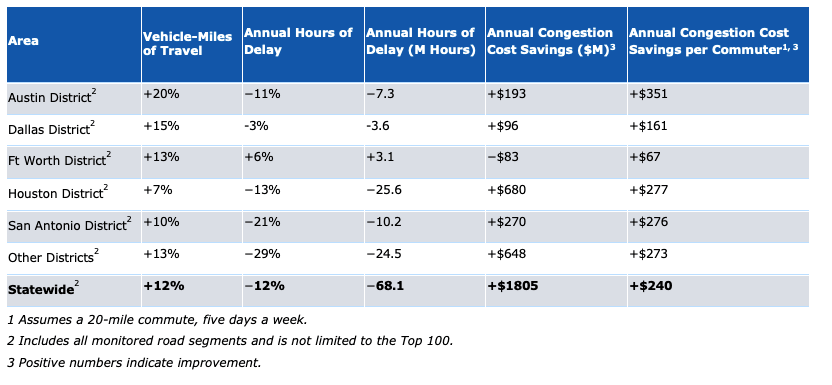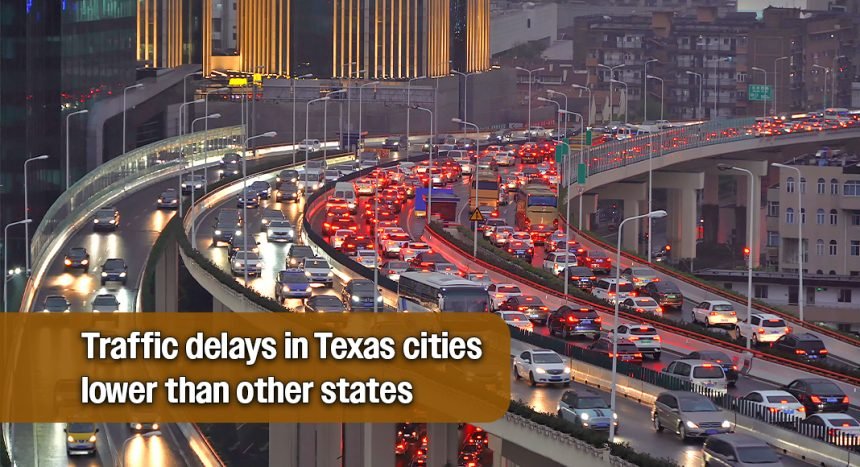Texas Border Business
PHARR, Texas – As Texas continues to experience rapid population and economic growth and more vehicles on the road, targeted congestion-relief transportation investments are helping drivers spend less time stuck in traffic and saving Texans millions of dollars each year.
Two state highways in the Rio Grande Valley are on the 2025 Texas Top 100 Congested Road Segments Report.
Rank 79: International Blvd/SH 4, between I-69E & State Highway 48, in Brownsville
Rank 95: Interstate 2, between I-69C and SH 336 (10th street), in Pharr/McAllen

What is this study?
In response to increased roadway congestion throughout Texas, since 2009 TxDOT has produced a ranked list of the 100 most congested road segments in the state.
Person-hours of delay per mile and truck delay per mile are used as the primary performance measures for the rankings.
The economic value of delay for each segment is also included.
This is a mandate from the Texas Legislature.
What led to the decrease in congestion?
TxDOT currently has more than $60 billion worth of active construction projects across the state.
These projects are having an impact. By not only reducing congestion by targeting areas that need it most, but by improving efficiency of the entire transportation system.
An example of efficiency is by improving an area in one part of the city, other parts of the city also see congestion relief because everything starts flowing better.
HOW DO WE COMPARE TO OTHER PARTS OF TEXAS?
The TxDOT Pharr District currently has 2 roadway segments on the Top 100 list.
Fort Worth has 13, Houston has 36, Austin has 9, San Antonio has 10 and Dallas has 28.
Less congestion thanks to TxDOT projects

The 2025 Texas Top 100 Congested Road Segments Report highlights Texas’ strong economic and population growth. The report compares 2024 conditions with 2017, which represent recent peak congestion periods in Texas. Compared with 2017, statewide delays in 2024 are down 12% even as statewide travel grew 12%.
These improvements saved Texas commuters an estimated total of $1.8 billion in 2024 in terms of delay and fuel costs compared to eight years ago, which translates to $240 annual cost savings per commuter.
“With more people driving on Texas roads, you might expect traffic-related problems to increase, but thanks to our projects throughout the state, delays are actually going down,” TxDOT Executive Director Marc Williams said. “It’s a testament to the incredible work our crews and engineers do every day and shows that the investments in transportation are working.”
“Could you imagine how tough our traffic challenges would be if TxDOT had not focused on targeted congestion relief projects over the last several years?” Texas Transportation Commissioner Robert C. Vaughn said. “Texas is leading the nation in active construction projects, which are helping people get to work faster and spend more time with their families.”
Texas Clear Lanes
The Texas Clear Lanes program, the congestion-relief initiative launched by Gov. Greg Abbott in 2015, continues to target congestion in the state’s largest metro areas. TxDOT district-led projects in smaller cities are also delivering faster improvements as work wraps up.
About half of the Top 100 road segments were under construction in 2024, including several projects from Texas Clear Lanes.
“Even with more people and more cars on the road, Texans are still doing better than they were five or 10 years ago,” said David Schrank, Texas A&M Transportation Institute (TTI) senior research scientist. “That’s a direct reflection of the congestion-fighting strategies that have been put in place, especially Texas Clear Lanes and other mobility-enhancing projects across the state.”
Leading the nation
The recently released national 2025 Urban Mobility Report reinforces the progress being made to alleviate congestion throughout the state of Texas. The report found that, compared with similarly sized metropolitan areas across the nation, delay per mile of travel in Dallas–Fort Worth and Houston was about 39% lower than in similarly sized cities, while San Antonio and Austin experienced about 16% less delay.
Roadway highlights
Dallas: Stemmons Freeway has a 15% reduction in delay; I-30/US 67 corridor experienced a 34% reduction in delay following completion of the I-30 East project (adjacent segment where construction was completed)
Bryan–College Station: Delays along FM-2818 have decreased 18%
Laredo: Congestion on a segment of Mines Road near the World Trade Bridge is down 45%due to operational improvements
Fort Worth: I-820 corridor delays have improved by more than 50%
Together, these efforts show how TxDOT projects and operational improvements are helping Texans spend less time in traffic and travel more safely and efficiently.
Houston’s West Loop (I-610) remains the state’s most congested road, followed by Houston’s Eastex Freeway (I-69/U.S. 59), Dallas’ Woodall Rodgers Freeway, Houston’s Southwest Freeway (I-69/U.S. 59) and Houston’s North Loop (I-610). Ninety-six of the Top 100 segments are in the four largest metro areas. A comprehensive listing of road segments statewide, with year-to-year comparisons, is available online.
Changes in traffic demand and delays
The table below highlights changes in traffic demand and delays across key regions comparing 2017 to 2024, illustrating the impact of these improvements on traffic flow and commuter costs.













